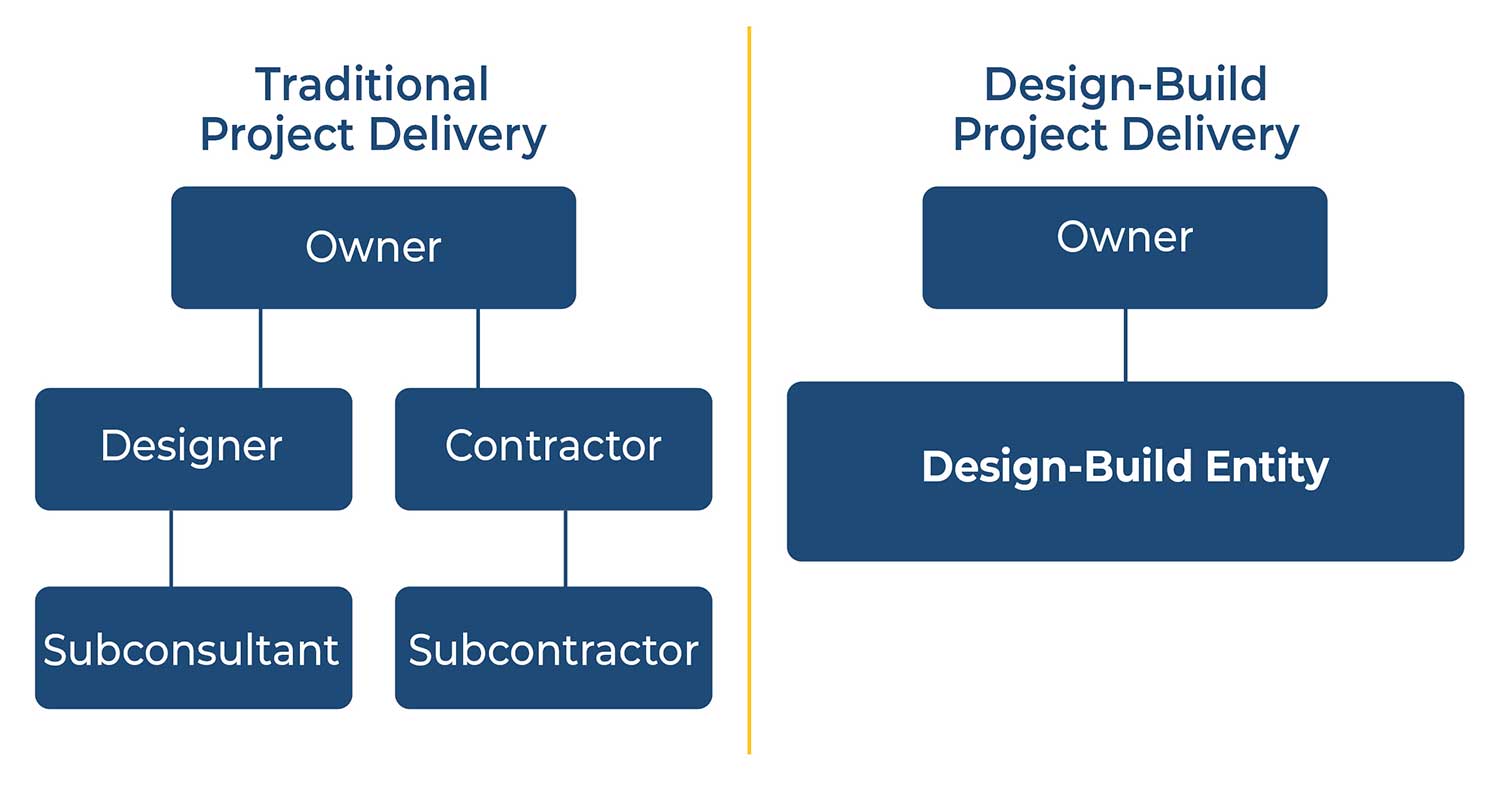Design-Build. It’s a streamlined, highly collaborative approach to design and construction. It’s a team of professionals working together from start to finish in an open, communicative and harmonious fashion. It’s the notion that when clients sit at the same table with architects, engineers, general contractors and cost estimators, creative solutions emerge. And according to architect Steve Pyrkosz, AIA, NCARB, LEED AP, it’s an effective approach that ensures minimal disruptions, delays or cost-inducing errors.
Pyrkosz’s professional take on the Design-Build project delivery method is backed by his 20+ years of experience designing projects with this approach.
“My first job right out of college, I was an Architectural Drafter for a general contractor/developer, where I regularly worked alongside the construction team to develop design and construction drawings,” Pyrkosz said. “I ended up working there for about 18 years [eventually becoming the firm’s Director of Architecture], and as a result, I got to see first-hand the power of many thoughtfully executed Design-Build projects.”
Having had the opportunity to use this delivery method in several different states with a variety of contractors, Pyrkosz has truly seen it all. And while no two contractors are exactly alike, the key to a successful Design-Build project always remains the same: all parties must be involved and ready to collaborate from day one with a high level of trust and respect for each other.

“When you have the right Design-Build entity in place, I’ve found these projects to result in fewer surprises and inefficiencies,” he explained. “With traditional project delivery methods, the owner has to manage two separate contracts – one with the architect and the other with the general contractor. All too often, this can cause a lot of miscommunication between those two parties, resulting in potential cost overruns, schedule changes, and sometimes, a little bit of finger-pointing. But with Design-Build, the owner only has to manage one contract with a single point of responsibility – otherwise known as a team that consists of the architect and the contractor, as well as other specialty trades or subconsultants.”
The concept of a true partnership was one that Pyrkosz made clear to emphasize.
“The success of this approach is highly dependent on all parties working together from the beginning and listening to each other as equal partners throughout each and every phase.” he said. “Leaving all egos at the door is pretty important, and in my opinion, it’s the best way to achieve lower unit costs, accelerated construction schedules, and enhanced innovation.”
It might seem straightforward, but the benefits of a Design-Build approach aren’t always overtly apparent. When asked if there were any misconceptions regarding this streamlined delivery method, Pyrkosz was more than ready to fire them away.
Myth #1: Design-Build is more expensive than traditional methods.
Fact: “Not necessarily. With the architect and contractor working hand-in-hand, they’re able to avoid the many miscommunications that often occur within a set of construction documents. This can save money and minimize costly disputes.”
Myth #2: Design-Build puts everything into the contractor’s hands, leaving the owner and architect with limited control over the final product.
Fact: “Definitely not the case when you attack each project as a team and keep everyone’s hands equally in the pot. The Design-Build approach is very transparent, and it really enables everyone’s perspectives and opinions to be equally represented.”
Myth #3: Design-Build is good for speed, but bad for quality.
Fact: “Quite the opposite actually. Yes, the project’s schedule is often accelerated, but that’s due to streamlined communication and activities, not carelessness. Together, the team builds while they design and design while they procure – all while maintaining a high-level of quality control.”
Pyrkosz appreciates the opportunity to “debunk” Design-Build myths such as these. His experience has afforded him a unique perspective on the way both architects and contractors tend to tackle projects.
“Believe it or not, we all want the same thing: a well-designed and well-constructed project that articulates the owner’s value proposition,” he said. “All we have to do is approach it in a unified and collaborative way.”

